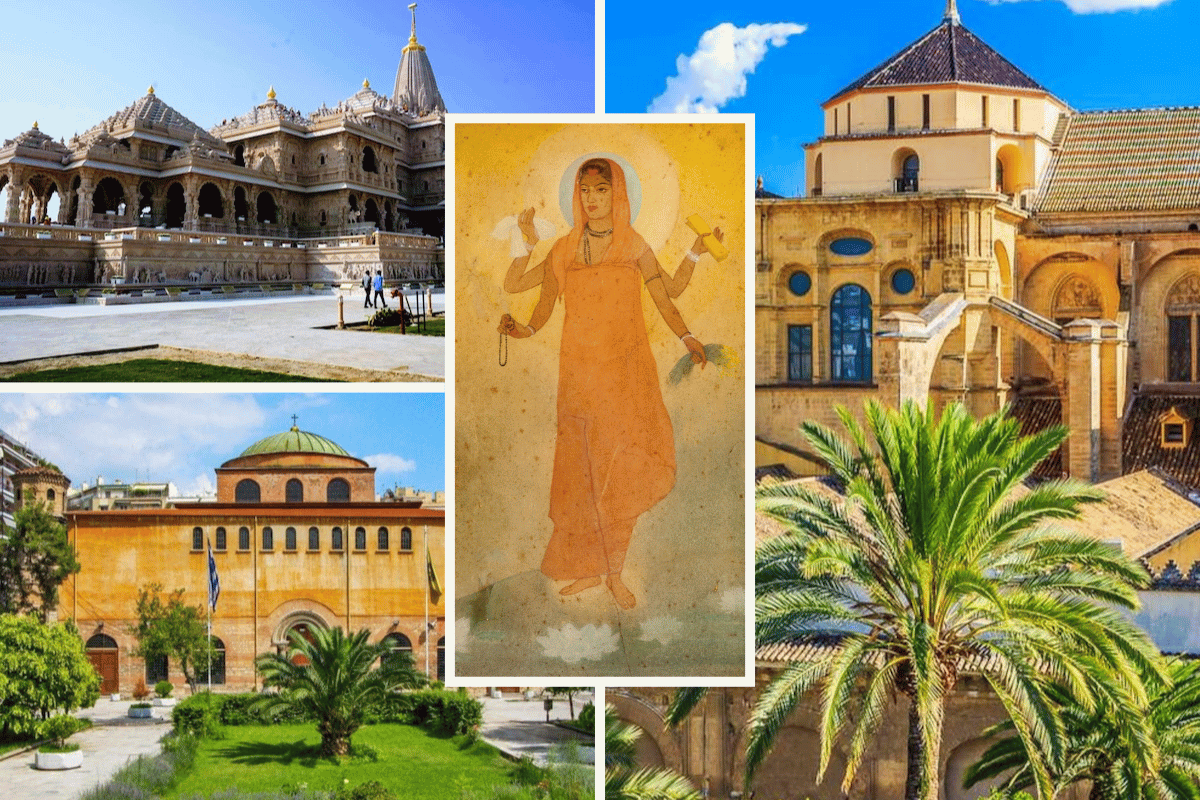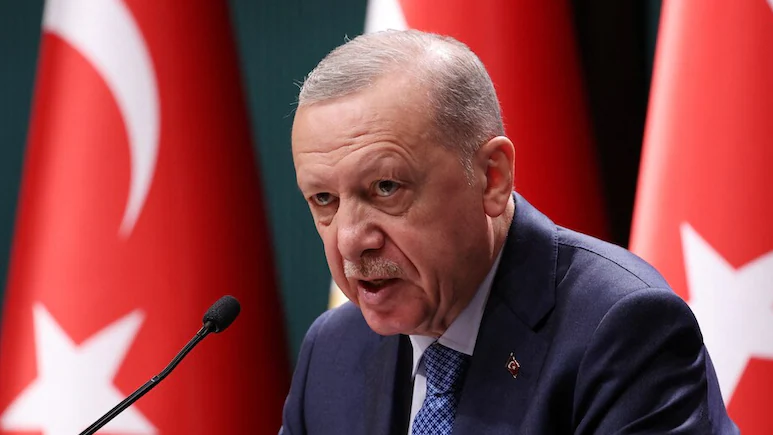
Deepavali (lit “row/garland of lights” – popularly known as Diwali) is one of the most popular and sacred Hindu festivals, typically lasting around 5 or 6 days, marking the triumph of light over darkness and good over evil.

Deepavali occurs during the Hindu month of Karthik, usually around two weeks after the end of Navratri. A number of events in Hindu history, as well as important spiritual learnings, are celebrated during the days of Deepavali. Many Hindus deep clean their homes, prepare special sweet and savoury treats and purchase new clothes and gifts in the lead-up to Deepavali. As with almost all Hindu festivals, there is tremendous pluralism in the way Hindus from different parts of India and different corners of the globe celebrate Deepavali and the traditions that they follow. The order of events and celebrations also varies according to the community as well as the lunisolar calendar on a year-to-year basis. Aspects of nature feature prominently regardless of what Hindu traditions are followed. This festival is also celebrated, for different reasons, by communities who practice other faiths originating in India. It goes without saying that the ethos and core values underpinning Deepavali can be enjoyed and celebrated by people of all faiths and none. We will endeavour to post relevant content as the coming days unfold. As people from all corners of the globe prepare to embark on this iconic festival, INSIGHT UK wishes everyone happiness, peace and prosperity.
Day 1: Govatsa Dwadashi / Vasu Baras

Govatsa Dwadashi – Vasu Baras
Commonly known as Govatsa Dwadashi or Vasu Baras, this marks the first observance of Deepavali. Hindus consider all beings to be sacred and many have the monistic belief in the same divine consciousness underpinning and pervading all that can be perceived.
Cows are given a special place, representing gentleness, strength, bounty and maternal selflessness. Mother Earth is said to take the form of a cow when seeking assistance from other members of the Hindu pantheon, and cows are oftentimes seen to be symbolic of all life. Kamdhenu – the granter of abundance who, according to Hindu legends, emerged from the churning of the primordial ocean, is venerated today. Special fasts are held for Nandini (commonly believed to be the daughter of Kamdhenu and one of Hindu folklore’s other famous cows) and Nandi (the bull devoted to Bhagwān Shiva), and it is remembered that Bhagwān Krishna was a friend and protector of cows. Cows and their calves are honoured and worshipped, and many people abstain from taking dairy and wheat products. Parents may also hold a fast for the benefit of their children.
On this day, some communities also make it a point to clear any debts. Usually occurring prior to the start of Deepavali celebrations, Rama Ekadashi is a fast observed by devotees of Vishnu and depending on the year, may coincide with the events of Deepavali. INSIGHT UK wishes everyone well on this first auspicious day of Deepavali.
Day 2: Dhanteras

Bhagwan Dhanvantari
Dhanteras marks the second phase of Deepavali. Today many Hindus commemorate Bhagwān Dhanvantari, Father of Ayurveda and divine physician, and Kuber – the custodian and bestower of riches. The elephant-headed Bhagwān Ganesha is also worshipped (as is customary in most Hindu observances), as is Goddess Lakshmi – the goddess of material and spiritual wealth and all that is good and pure. It is remembered that Dhanvantari and Lakshmi emerged from the churning of the primordial ocean, and as such, today is a day of cleansing and new beginnings. Homes are cleaned and decorated with rangoli (intricate patterns of coloured powder), the Tulsi (or holy basil) plant is worshipped, many people purchase new utensils, gold and jewellery, and light up the night with clay diyas and lamps. Annapoorna, the goddess of food and abundance and an incarnation of Mother Parvati, is also venerated today.
During this and subsequent phases of Deepavali, golden decorations and lights are also used to pay reverence to Yam, the Bhagwān of Death, and commemorate the story of the bride of the son of King Hima. King Hima’s son was prophesied to die that night but was saved by the ingenuity of his bride who dazzled and enchanted Yam (who had entered the threshold of their chambers in the form of a serpent) with piles of gold, ornaments and diyas as well as by narrating stories and singing songs throughout the night. Mesmerised, Bhagwān Yam left in the morning and the prince was saved. Insight UK wishes everyone good health, material abundance and joy this Dhanteras.
Day 3: Kali Chaudas and Hanuman ji Puja

Kali
Depending on the lunar calendar year, the customs described in today’s and tomorrow’s posts may fall on separate days, or the same day. Hindus following different traditions or hailing from different regions of India give prominence to different deities and place emphasis on different observances. This phase is known by a number of different names including Narak Chaturdashi, Chhotti (“little”) Diwali, Kali Chaudas, and Hanuman Puja. On these days, it is customary for people to take an early morning bath before sunrise and anoint themselves with fragrant oils and herbs.
Many Hindus commemorate the killing of the evil demon Narkasur. Although different communities vary over who vanquished this demon, a popular legend is that Narkasur was killed by Satyabhama, one of Bhagwān Krishna’s queen consorts who many believe is an incarnation of our Mother Earth. Some say She flew into battle on Garuda, the celestial eagle. Others say She rode into battle against Narkasur, her husband Krishna acting as her charioteer. In some accounts, Satyabhama slayed Narkasur using Krishna’s discus and in others, She fatally wounded him with an arrow. Krishna assisted by slaying and vanquishing Mura, Narkasur’s general (hence, Krishna is also known as “Murari”). Narkasur was born of the Earth, and had been granted a boon that none save his mother could kill him. Therefore, only Satyabhama – an incarnation of Mother Earth – could vanquish him. As a final wish, Narkasur requested that people commemorate his destruction with light, colour and sparkle, and this is one of the many reasons that light, colours and even firecrackers are used as part of Deepavali festivities. Spirits and negative elements are said by some to roam the Earth at night, so the glow of lights and noise from crackers keeps them at bay.
Hindus from some communities venerate the Goddess Kali (a fearsome aspect of Durga and remover of negativity). The monkey Bhagwān Hanuman (known for his strength, loyalty and valour) is also worshipped; Deepavali is said to mark the return of Bhagwān Ram with his wife Devi Sita to the city of Ayodhya after a prolonged exile and the abduction of Sita by Ravan. Ram honoured Hanuman – by decreeing that the worship of Hanuman would precede the worship of Ram and Sita because Ram’s victory over Ravan and the safe rescue of Mother Sita would not have been possible without Bhagwān Hanuman’s devotion and assistance. INSIGHT UK wishes you all victory over all your troubles and the purging of all negativity this Deepavali.
Day 4: Deepavali

Deepavali
The observances described in yesterday’s posts signify the victory of good over evil and the removal of negativity from our lives. Just as Satyabhama – an incarnation of Mother Earth – had to slay the demon Narkasur borne of herself, we too must take ownership of our lives and take steps to conquer all negative tendencies and vices.
The next phase of Deepavali signifies the inculcation and imbibement of all that is good, sattvic and pure in our lives. Popularly called Lakshmi Pujan, this phase of Deepavali is celebrated by many Hindus as the principal day of festivities. Just as the citizens of Ayodhya welcomed Ram and Sita (incarnations of Vishnu and Lakshmi) back to their rightful home, Hindus believe that Mother Lakshmi enters every household on this night. Goddess Lakshmi likes cleanliness and order, and people make special efforts to welcome Her to their freshly cleaned and decorated homes, lit with diyas, coloured with rangoli designs and symbolic footprints of the Goddess. In some Hindu communities, Sharda (also known as Saraswati, the Goddess of wisdom and spiritual evolution) or Mother Kali is worshipped as the main deity.
Many Hindu households have a family shrine, in which pujas (or prayer rituals) are conducted venerating several manifestations of the divine. For many Hindus, today marks the transition to a new business year, and financial account books, ledgers as well as spiritual and financial symbols are venerated with gratitude. At night, it is customary to celebrate the victory of good over evil with firecrackers, and some people nowadays take steps to be as eco-friendly as possible. Families and friends get together to celebrate with food, festivities and gifts, and the young pay respects to the older generations.
Ancestral souls are also remembered tonight and prayers are offered and blessings sought with affection and gratitude, as is the tradition during Amavasya, a specific phase of the moon in Hindu astronomy. Devotees of Shiv, particularly from certain communities of South Indian descent, often observe a long fast which is broken on this day, or alternatively might fast on this particular day. INSIGHT UK wishes everyone a Shubh Deepavali. May Mother Lakshmi shower you and your loved ones with her grace!
Day 5: Hindu New Year
Deepavali celebrations continue in the days after Lakshmi Poojan. As always, the different observances may occur together on the same day, or on different days depending on the yearly lunisolar calendar. Bhagwān Krishna, during his childhood days among the cowherds and village folk, is said to have encouraged people to honour and revere nature above all else, because nature provides for and sustains all beings. People started worshipping the local Govardhan mountain (associated with plant life and quenching rains that sustained the humans and animals) rather than propitiating the celestial being Indra, who was angered and sent forth a mighty and destructive rainstorm. Krishna then lifted the Govardhan mountain to provide shelter for the villagers and animals, and Indra had to swallow his pride. Nature, in the form and iconography of the holy Govardhan mountain, is worshipped with gratitude today.
Today is also known as Annakut (literally a mountain of food”) – several different delicacies are prepared (typically 56 in number – because the child Krishna skipped his habitual 8 meals/snacks per day during the 7 long days when he held the mountain as an umbrella for the terrified people) and ceremonially offered to Bhagwān Krishna in thanksgiving.
Another observance in this phase of Deepavali is that of Balipratipada, during which king Bali – a demonic king pushed deep into the netherworld by Vaman (the dwarf incarnation of Vishnu) – is honoured and worshipped. As Bali had many good qualities, Vishnu allows him periodic visits to the Earth’s surface to be remembered and venerated; he is also worshipped during the Onam festival. “Padwa” usually occurs on the same day as Balipratipada and on this day, many Hindus celebrate the bond of love between husband and wife with special prayer rituals and presenting the wife with gifts. In some communities, the bond between father and daughter is also celebrated on this day.
The historic coronation of King Vikramaditya, one of ancient India’s prolific rulers, is remembered on this day. Some Hindus also mark the mythological game of dice played by Shiv and Parvati by playing games themselves. The days after Lakshmi Pujan also mark the observance of Vishwakarma Puja. Vishwakarma is the divine celestial architect and patron deity of all skilled tradesfolk and craftspeople. He is worshipped by artisans, tradesfolk and craftspeople and they also venerate their tools and machinery with gratitude and reverence because Hinduism encourages seekers to honour the divine source of all skills, talents, matter and objects and never take these for granted. The other occasion that Vishwakarma is honoured is on Vishwakarma Jayanti, which usually takes place in the Gregorian month of September. Deepavali also marks the start of the new year for many Hindus from the Gujarati Hindu community. Insight UK wishes everyone well on this auspicious day.
Day 6: Bhai Dooj

Bhai Dooj
All human relations are honoured in Hinduism, and the final phase of Deepavali is popularly called Bhai Dhuj (known by different names in different parts of India). Like Raksha Bandhan, it celebrates the brother-sister bond. Many tales exist in relation to the origins of Bhai Dooj. For some, it commemorates the tale of Yama (the Hindu deity of death) visiting his sister Yamuna (a personification of one of India’s many holy rivers). Other traditions mark the story of Bhagwān Krishna visiting his sister Subhadra on returning from his mission, with Devi Satyabhama, to vanquish the demon Narkasur.
Raksha Bandhan (which occurs earlier in the year and commemorates separate Hindu stories) is associated with brothers vowing to protect sisters in all circumstances, whereas in Bhai Dhuj, sisters pray for the wellbeing of their brothers. Different parts of India have their own ways, and in some places, girls or ladies who do not have brothers honour the moon instead as a proxy for a brother. Hinduism encourages spiritual aspirants and seekers to evolve their traditions with time and many families now conduct the same prayer rituals among siblings irrespective of gender. Siblings make a special point of meeting, lovingly preparing meals, and exchanging gifts and prayers for each other’s wellbeing. INSIGHT UK wishes everyone well in the days, weeks and months ahead.









